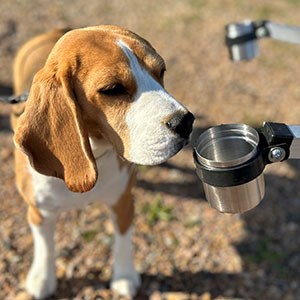Facts:

Diminished crops and lowered fruit quality are some of the effects of Fruit tree canker, the single most destructive disease plaguing Swedish apple orchards. In order to trace the disease early and stop it from taking root, specially trained search dogs are being employed to prevent import of infected cultivars from abroad.
Fruit tree canker is a fungus-based disease that affects roughly 10 percent of all apple cultivars, although in some cases orchards can face infection rates of up towards 70 percent. The undesired fungus may enter the country when orchard owners in Sweden import cultivars from abroad.
– The time from infection to visible symptoms varies, but it can take up towards a few years, says Larisa Gustavsson, researcher at the Swedish University of Agricultural Sciences (SLU).
The use of countermeasures against the fungus is hampered by limited supplies and by strict regulations. By working with a dog instructor, Larisa Gustavsson and her colleagues now aim to track down a solution which they hope will prevent infected cultivars from entering the country.
– We inoculated this one two weeks ago, Larisa Gustavsson says while pruning the stem of an apple tree.
The pruned parts are handed over to dog instructor Marie Koenen, along with doses of spore samples in varied concentrations.
– This way, the instructor can gauge how strong the scent needs to be for the dogs to react to it, says Marie Koenen, project manager and CEO of Byrackaforever.
One of the challenges is to extract scents that are as pure as possible.
– If we use whole stems, we can’t be sure if the dogs react to other things such as cellulose. We want as much canker-scent as possible, and the least possible tree-scent.
Marie Koenen fills a plastic tube with a spore sample, which is then distributed across 12 cups mounted on a carousel-like framework. Next, two-year old beagle Myrra is brought in and given the command to check all cups on the carousel. With quick and methodical sniffs, she locates the cup containing fruit tree canker spores and promptly receives her reward from instructor Marie Koenen.
The current project, titled Detection of Pests using search dogs is a joint effort of SLU, Kiviks Musterier, Äppelriket, and Green Innovation Park among others. Early results confirm that search dogs can locate Fruit tree canker, but there is still more potential to tap.
– Dogs could be useful for many other detection tasks, outside of just Fruit tree canker, such as core rot.
The symptoms of fruit tree canker are brownish stains on the tree’s trunk, but young saplings can be carriers of the infection before physical symptoms surface. In order to stop import of cultivars in the early stages of infection, the search dogs needs to be able to identify the scent of a newly infected cultivar. This is predicated on close co-operation between scientists and the dog instructor. Larisa Gustavsson’s many years of experience working with apple trees guarantees a training programme where the dogs develop a high probability of finding infected trees that have yet to develop the tell-tale brown stains.
Larisa Gustavsson estimates that dogs could be deployed to screen imported cultivars in 10 years from now, which would put a stop to the disease entering the country.
– There is still much work to be done before we can verify that the dogs mark for the disease, and not for anything else. But the project is still yielding valuable knowledge.
Larisa Gustavsson
Researcher at the Department of Plant Breeding
Telephone: +4640415163, +46702858114
E-mail: larisa.gustavsson@slu.se
More articles on apples at slu.se/apple